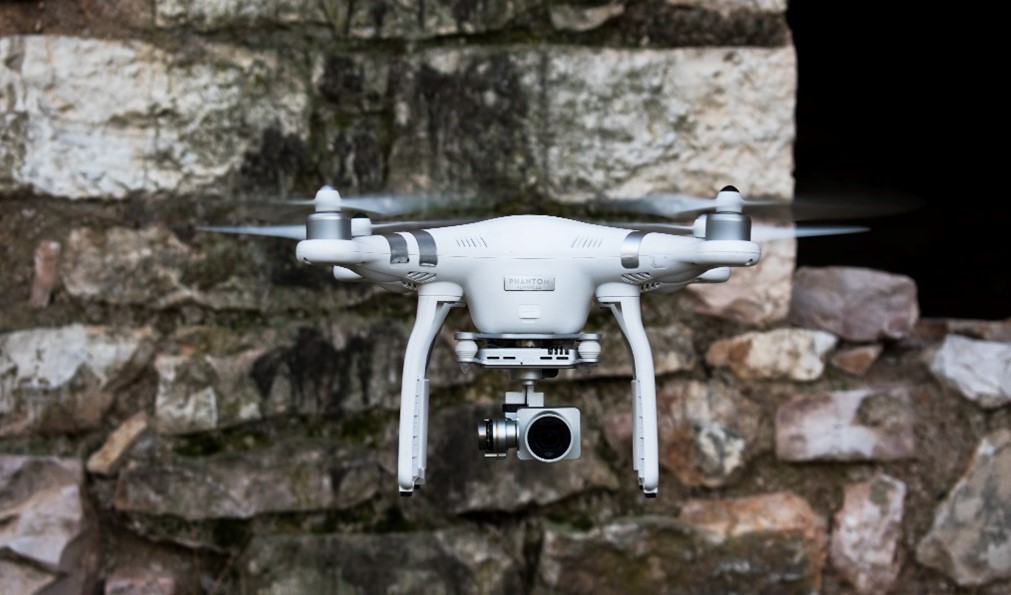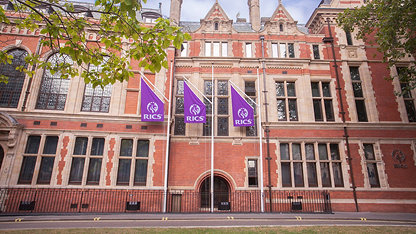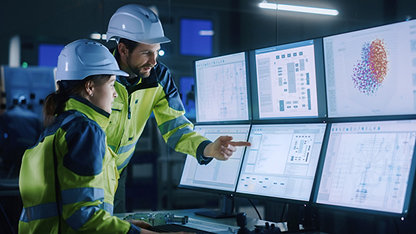Rapid technological advancements are reshaping industries like never before. Building surveying stands at the brink of a significant transformation driven by the potential of artificial intelligence (AI) to bring forth a wave of innovation that can revolutionise traditional practices and redefine the roles and responsibilities of building surveyors. From assessing building conditions to project management, AI-driven tools and algorithms are poised to streamline processes, augment decision-making, and unlock new opportunities. As we step into the domain of AI, it becomes essential to explore how this innovative and potentially disruptive technology could shape the future of building surveying, ultimately redefining the role of these professionals across the property lifecycle.

Role of a building surveyor
The role of a building surveyor is crucial across the built environment. From residential to commercial properties, they are responsible for assessing the quality and condition of buildings as well as advising on the best ways to improve them.
“Building Surveying is concerned with the design, construction, support, and management of real estate assets throughout their lifecycle. This rich diversity of work offers building surveyors a varied and interesting career. The property industry is global and wide-ranging. Building Surveying is dynamic and offers opportunities internationally as the profession grows. Qualifying as an RICS Associate in the Building Surveying pathway, you can be involved with an asset for its whole lifecycle, from concept, design, and construction, through to alteration, refurbishment, maintenance, demolition, and replacement. You may work on land, property and construction matters for clients or within organisations: for example, commercial companies, consultants, central and local government, housing associations, charities and private individuals. RICS Associates work within areas such as the preparation of drawings, applications and carrying out surveys. These cover the same areas as Chartered Building Surveyors and Associates can find themselves supporting Chartered Surveyors in more complex activities.”
Key responsibilities of a building surveyor include:
- Surveying and assessment: Building surveyors are responsible for conducting detailed surveys and assessments of properties. This includes evaluating their condition, identifying potential defects or issues, and providing recommendations for repairs, maintenance or improvements.
- Design and planning: Building surveyors collaborate with architects and engineers to ensure that designs adhere to regulations, standards, and client requirements.
- Regulatory compliance: Ensuring compliance with relevant building codes, regulations and legal requirements is a crucial responsibility. Building surveyors have a deep understanding of local building regulations and planning laws to ensure that projects are carried out in a legally compliant manner.
- Project management: Building surveyors often oversee various stages of construction projects. They monitor progress, manage budgets, coordinate contractors, and ensure that projects are completed on time and within budget.
- Alteration and refurbishment: Building surveyors assess and plan alterations or refurbishments to existing properties. This includes proposing changes to improve functionality, energy efficiency and overall aesthetics.
- Maintenance and management: Overseeing the ongoing maintenance and management of properties is essential. Building surveyors develop maintenance schedules, recommend repairs and implement strategies to extend the lifespan of buildings.
- Client communication: Effective communication with clients, stakeholders and colleagues is a fundamental aspect of the role. Building surveyors provide clear explanations of survey findings, recommendations, and project progress to ensure all stakeholders are well-informed.
- Technical expertise: Building surveyors possess technical expertise in various aspects of construction, such as structural integrity, building materials and construction methods. They use this knowledge to assess risks and make informed decisions.
- Health and safety: Ensuring the health and safety of occupants and workers is paramount. Building surveyors identify potential hazards, assess risks, and implement safety measures to create a safe environment.
- Environmental sustainability: Building surveyors may advise on energy-efficient designs, materials and technologies to minimise the environmental impact of construction and maintenance.
- Documentation and reporting: Building surveyors are responsible for preparing accurate and detailed reports based on their assessments and findings. These reports are used by clients, stakeholders and other professionals involved in the project.
What is AI and how is it being used?
AI, is a revolutionary field that aims to create computer systems capable of performing tasks that typically require human intelligence. From speech recognition to problem-solving, AI has the potential to transform various industries and improve our daily lives.
The journey of AI can be understood in three distinct waves, each representing a significant leap forward in its capabilities2.
- In the first wave, experts crafted algorithms and software based on their own knowledge. These systems followed logical rules and tackled well-defined problems, such as chess-playing computers and delivery optimisation software. However, they faced limitations when confronted with new situations and struggled to adapt to uncertainty.
- The second wave brought forth statistical learning, where engineers shifted from manual rule creation to developing statistical models. These models were trained on vast amounts of data to improve accuracy. Artificial neural networks emerged as a shining example of this wave, excelling in tasks like face recognition, speech transcription, and object identification. While they achieved impressive results, their inner workings were lacking a clear understanding of how they reached their conclusions.
- The third wave of AI is marked by contextual adaptation, where AI systems can understand and respond to the context of a situation. This means that they can consider the specific circumstances, environment, and user preferences when making decisions and providing explanations for their actions. The focus has shifted towards building more sophisticated models capable of comprehending complex relationships and providing deeper insights from diverse data sources. However, the development of these advanced systems requires extensive research and innovation.
2https://futurism.com/artificial-intelligence-tech-will-arrive-in-three-waves
Today we find ourselves in a fourth wave of AI, with generative models like ChatGPT and large language models (LLMs) catalysing transformative advancements across various domains. AI is being applied across various domains. Natural Language Processing (NLP) allows virtual assistants like Siri and Alexa to respond to spoken or written commands, making interactions more intuitive. Image and video recognition enable automated tagging, content filtering, and visual search capabilities, benefiting areas like surveillance, self-driving cars, and social media platforms. NLP now has the ability to be used across the workplace. For example, voice recognition can be used in meetings allowing for automated transcripts, notes, and documentation. Documents can also be transferred into structured data which could be a huge benefit to a range of surveying professions. Moreover, AI's integration into robotics has opened doors to tangible applications, enhancing tasks in manufacturing, healthcare, and beyond.

As AI continues to advance, we can expect further breakthroughs and possibilities yet unimagined. The future holds the promise of AI systems that not only surpass human capabilities but also possess a deep understanding of the world, providing us with remarkable insights and transforming the way we live and interact with technology.
How will AI shape practice areas across the built environment?
While AI can provide numerous benefits such as increased efficiency, improved accuracy and cost-effectiveness, it poses many changes and challenges to current job roles, including:
- Automation: Job automation has the potential to lead to unemployment in industries such as data entry, manual labour, and basic customer service. In the construction industry, autonomous robots can automate certain manual labour-intensive tasks such as bricklaying. Similarly, AI-powered machinery and drones can automate surveying and mapping tasks, collecting data and generating accurate topographic maps without the need for extensive manual measurement and documentation.
- Transformation: AI can transform jobs by augmenting human capabilities and changing the nature of the work. For example, AI can be integrated into existing jobs so that it can assist professionals in decision-making or provide insights into strategic planning. This could lead to a re-definition of the job description and require workers to acquire new skills to adapt to the changing market. For example, in the field of energy-management, AI can transform the role of energy auditors. AI algorithms can analyse building data, including energy consumption patterns, occupancy, and weather conditions to identify energy-saving opportunities and optimise building performance. Energy auditors can leverage AI tools to conduct comprehensive energy audits, provide recommendations for energy efficiency improvements and track the effectiveness of implemented measures. This transformation requires energy auditors to develop skills in data analysis and interpretation, as well as understanding the integration of AI technologies into energy management practices.
How will AI shape the role of a building surveyor?
AI is set to bring changes to building surveying, introducing a new era of efficiency and innovation. These advancements are expected to impact various dimensions of building surveying practices, ultimately enhancing accuracy, decision-making processes, and overall effectiveness.
Data collection
Using automated sensor networks, AI-driven monitoring systems and predictive analytics, AI can streamline data gathering, identifying anomalies, predicting maintenance needs and providing insights for efficient building management. This ultimately helps building surveyors to gather building data on environmental conditions, structural health and energy consumption reducing time and effort spent on mundane tasks. This shift from manual inspections to real-time data collection allows continuous insights into a building's performance, saving cost and time over the asset life cycle.
By harnessing AI-driven image recognition technology, building surveyors can enhance their defect detection and issue identification processes through the analysis of images or videos. This technological advancement holds the potential to revolutionise traditional surveying methods by expediting the identification of defects and issues.
AI-powered image recognition systems can process large volumes of visual data at a rapid pace. Building surveyors can capture images or videos of various parts of a structure using devices such as smartphones or drones. These visual records are then fed into AI algorithms that can analyse and identify potential defects or anomalies. This could include identifying cracks in walls, corrosion on surfaces, water damage, wear, and tear on building components, and much more. The AI system can be trained to recognise patterns and irregularities that might not be immediately evident to human observers.
There are many benefits of AI-powered image recognition in building surveying, including:
- Expediting the surveying process, allowing surveyors to cover larger areas in less time.
- Enhancing the accuracy of defect detection, reducing the chances of missing critical issues that might be overlooked by the human eye.
- More consistent results, as the technology is not influenced by factors such as fatigue or subjectivity.
Preventative maintenance
Founded in 2020, Planna, an RICS Tech Partner, is a London-based Proptech startup focused on disrupting the home maintenance and service space. Their mission is to empower households by providing tailored preventative maintenance plans for each property, guiding users on what to do and when to do it. Planna's platform allows users to track their progress, budget for necessary work and access real-time help from experts through video consultations. This innovative approach aligns with the transformative potential of AI in building surveying. One such aspect is the emergence of predictive maintenance, enabled by AI algorithms analysing data from sensors. Building surveyors can leverage this technology to predict maintenance or repair requirements, proactively preventing costly failures, extending the lifespan of building components and optimising maintenance schedules.
However, it is important to acknowledge that completely replacing human expertise in certain aspects of building surveying might not be easily achievable. In an RICS Built Environment Journal article Can AI really replace humans on PPM surveys? by Adrian Tagg MRICS, the author highlights that while AI has demonstrated capabilities across various domains, the complete automation of routine tasks like planned preventative maintenance (PPM) surveys presents challenges. PPM surveys involve systematic inspections and assessments of building components, seemingly well-suited for automation. Adrian emphasises the importance of the human touch and expertise in tasks involving site access, data collection and contextualisation of findings. While AI can certainly assist in data analysis and processing, the physical and mental attributes of human surveyors remain pivotal in building surveying. Therefore, while AI can enhance certain facets of building surveying, maintaining a symbiotic relationship between human professionals and technology is essential to ensure accurate and effective surveys. This sentiment aligns with Planna's approach, as they aim to provide users with both AI-driven assistance and access to expert guidance, ensuring a comprehensive and reliable maintenance strategy.
Virtual inspections
Virtual inspections have emerged as a transformative aspect of building surveying, fuelled by AI and advanced technologies. These inspections utilise drones and remote cameras to assess structures without physical presence, which enhances safety, efficiency, and data accuracy. Impact Aerial, an RICS Tech Partner and drone/aerial filming service provider, contributes to this technological shift. They offer drone services, combining experience and technology to capture unprecedented perspectives. While these benefits are significant, it is essential to recognise that human expertise remain indispensable. A harmonious integration of AI's data analysis, virtual inspections, Impact Aerial's specialised services and human insight ensures comprehensive assessments, informed decision-making and a more resilient approach to building maintenance and longevity.

Enhanced decision-making
The integration of AI in building surveying introduces a significant enhancement to decision-making processes. AI-powered predictive analytics can analyse vast amounts of data to provide valuable insights, enabling building surveyors to make informed and strategic decisions. These insights range from predicting maintenance needs and identifying potential defects to assessing the long-term performance of design choices.
By leveraging AI-generated insights, building surveyors can prioritise maintenance tasks, allocate resources efficiently and plan for future upgrades. This proactive approach not only extends the lifespan of building components but also reduces costs associated with emergency repairs. Moreover, AI's ability to process complex data sets and detect patterns allows for the identification of trends and anomalies that might be missed through traditional methods.
Building surveyors can also benefit from AI's capacity to generate actionable recommendations based on historical data and real-time monitoring. These recommendations guide professionals in making decisions that align with building performance goals and regulatory requirements. The synergy between AI-generated insights and human expertise empowers building surveyors to make choices that lead to more effective building management, improved occupant satisfaction and overall better outcomes.
How should building surveyors upskill?
To effectively navigate the emerging wave of AI building surveyors should develop proficiency in data literacy and analysis. This involves handling and interpreting data, using data analytics techniques, and deriving insights from the data generated by AI-powered systems. In addition to this, building surveyors should familiarise themselves with essential AI concepts, such as machine learning, neural networks, and algorithms. This foundational knowledge empowers them to comprehend how AI technology functions and apply these principles responsibly across their professional practice.
Building surveyors should cultivate the skill of effectively collaborating with AI systems. This involves acquiring a deep understanding of AI tools' capabilities and limitations, enabling them to discern when to rely on AI-generated insights and when to apply their professional judgement. By integrating AI-driven data analysis into their workflow, building surveyors can leverage AI's data processing capabilities to enhance their decision-making processes. This collaborative approach optimises accuracy and efficiency, yielding robust survey outcomes.
Gaining proficiency in the use of digital tools and software is a crucial aspect in today's technology-driven landscape. Building surveyors should navigate a spectrum of digital platforms that facilitate tasks ranging from data collection and analysis to report generation and client communication. Applications like ‘AI Assets’ by Aston Industries, an RICS Tech Partner, exemplify this trend. They offer advanced property management apps that streamline data capture and validation for property Asset Registers and Inventories. These apps make data collection, analysis and reporting for asset management automated, intelligent, accurate and efficient. They simplify the process of collecting high-quality data about property assets, ensuring accuracy and accessibility for reporting and property life cycle management. Such software empowers building surveyors to harness AI's potential while retaining full control over their professional expertise, ensuring that their insights remain at the forefront of their decision-making processes.
Though technology is at the forefront of change in the industry, other areas are also experiencing transformation, particularly in terms of sustainability. In an era marked by growing environmental awareness, green building practices and sustainable design have gained prominence in the construction sector. Building surveyors should not only adapt to evolving technology but also acquaint themselves with sustainable building principles to navigate this paradigm shift effectively.
Continuous learning is essential for building surveyors. While AI-driven innovation holds promise, building surveyors should also focus on traditional techniques. Engaging in workshops, seminars and industry events provides the skills to adapt to evolving demands. Balancing AI and traditional skills ensure versatility in addressing diverse challenges. These educational opportunities provide insights into the latest tools, techniques and best practices. Building surveyors can seamlessly switch between AI and manual assessments, adapting to project needs. Attending industry events will provide varied viewpoints, cutting-edge research, and discussions on technology's role. Continuous learning keeps building surveyors informed and agile, enabling integration with AI while preserving traditional expertise, driving success in an evolving field.
Prioritising effective communication and collaboration is vital for translating complex insights into actionable recommendations for diverse stakeholders. Collaborative abilities are equally crucial as surveyors work within interdisciplinary teams, where teamwork enhances project outcomes.
In conclusion, the integration of AI into building surveying signifies a pivotal moment, offering opportunities for efficiency and accuracy. As building surveyors embrace AI's capabilities, they should equip themselves with skills to harness its potential, ensuring collaboration and effective decision-making. Contrary to the fear of job displacement, AI will transform rather than replace building surveyors.
Aaliyah Pollock
Data and Tech Analyst













